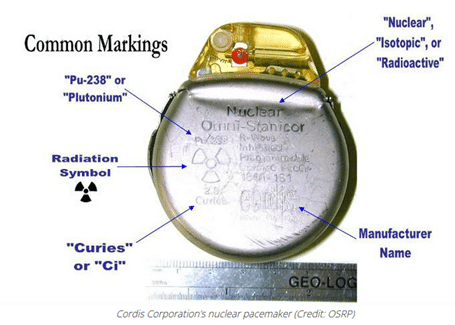Will IVF Clinics Be Able to Afford Cost of Business in Alabama?
"Can Medical Justice solve my problem?" Click here to review recent consultations...
- Former employee stole patient list. Now a competitor…
- Patient suing doctor in small claims court…
- Just received board complaint…
- Allegations of sexual harassment by employee…
- Patient filed police complaint doctor inappropriately touched her…
- DEA showed up to my office…
- Patient “extorting” me. “Pay me or I’ll slam you online.”
- My carrier wants me to settle. My case is fully defensible…
- My patient is demanding an unwarranted refund…
- How do I safely terminate doctor-patient relationship?
- How to avoid reporting to Data Bank…
- I want my day in court. But don’t want to risk my nest egg…
- Hospital wants to fire me…
- Sham peer review inappropriately limiting privileges…
- Can I safely use stem cells in my practice?
- Patient’s results are not what was expected…
- Just received request for medical records from an attorney…
- Just received notice of intent to sue…
- Just received summons for meritless case…
- Safely responding to negative online reviews…
We challenge you to supply us with a medico-legal obstacle we haven’t seen before. Know you are in good hands. Schedule your consultation below – or click here to visit our booking page.
The Alabama Supreme Court just ruled on a lawsuit that could shutter IVF clinics in the state. Or at least make their cost of doing business go up.
What happened?
An IVF Clinic was run by the Center for Reproductive Medicine (CRM) in Mobile, Alabama. In December 2020, a patient at the Mobile Infirmary Medical Center entered the cryogenic nursery where frozen embryos were stored. This patient was not authorized to enter. They removed some of the embryos and dropped some on the floor. These embryos were destroyed. How or why it happened, I cannot say.
CRM was part of the Mobile Infirmary Medical Center.
At least three couples (James and Emily LePage, William and Caroline Fonde, and Felicia Burdick-Aysenne and Scott Aysenne ) received the bad news about their frozen embryos. They sued the fertility clinic and the hospital. Their lawsuit was based on an 1872 law called Wrongful Death of a Minor Act. To prevail, they would need to prove that the frozen embryos were minors who died.
The law lets parents sue for monetary damages “when the death of a minor child is caused by the wrongful act, omission, or negligence of any person.”
So, sue they did, arguing negligence, wantonness, and breach of contract.
The lower-level court dismissed all claims other than breach of contract. The families appealed. And won.
On or around February 20, 2024, the Alabama Supreme Court concluded that frozen embryos are children.
In the court’s main opinion, Justice Jay Mitchell referred to frozen embryos in turn as “embryonic children” and “extrauterine children.”
While the state’s Wrongful Death of a Minor statute doesn’t explicitly include “unborn children”—let alone “extrauterine children”—in its purview, “the ordinary meaning of ‘child’ includes children who have not yet been born,” asserted Mitchell.
Furthermore, Alabama’s Supreme Court “has long held that unborn children are ‘children’ for purposes of Alabama’s that law,” he wrote. The central question in this case, said Mitchell, is “whether the Act contains an unwritten exception to that rule for extrauterine children—that is, unborn children who are located outside of a biological uterus at the time they are killed.”…
“neither the text of the Wrongful Death of a Minor Act nor this Court’s precedents exclude extrauterine children from the Act’s coverage.”
There were dissenting opinions.
Justice Will Sellers also rejected the idea that this is an easy and obvious call. “Any sequence of linguistic gymnastics, cannot yield the conclusion that embryos developed through in vitro fertilization were intended by the legislature to be included in the definition of ‘person,’ much less the definition of ‘minor child,'” he wrote. Rather, the inclusion of in utero children in certain statutes was there to allow for punishment of violence perpetrated against pregnant women. “To equate an embryo stored in a specialized freezer with a fetus inside of a mother is engaging in an exercise of result-oriented, intellectual sophistry, which I am unwilling to entertain,” Sellers added.
Importantly, even interpreting the 1872 law to include unborn intrauterine children is a modern twist. Dissenting Justice Greg Cook wrote:
“In fact, for 100 years after the passage of the Wrongful Death Act, our caselaw did not allow a claim for the death of an unborn infant, confirming that the common law in 1872 did not recognize that an unborn infant (much less a frozen embryo) was a ‘minor child’ who could be killed.”
No other state has reached the same conclusion about frozen embryos. Justice Cook suggested that being “the sole outlier” should “cause us to carefully reexamine our conclusions.”
He concluded the decision could end IVF in Alabama, since “no rational medical provider would continue to provide services for creating and maintaining frozen embryos knowing that they must continue to maintain such frozen embryos forever or risk the penalty of a Wrongful Death Act claim for punitive damages.”
Would insurance costs rise?
They’d have to.
Historically, veterinarians covered for professional liability paid low premiums for insurance. Non-economic damages are, for the most part, unavailable in veterinary medical lawsuits. There are exceptions, but the dollar value at play pales by orders of magnitude compared to people.[1] Pets are considered “property” or “chattel.” A cell phone is also considered property or chattel. If frozen embryos are treated as children, damages from lawsuits will also rise. For example, do non-economic damages affect premium costs to cover ob-gyns and neonatologists? Yes, they do.
From a practical perspective, one risk mitigation technique would be to forego freezing embryos. Implant all embryos that are created. This would, of course, make it harder for those trying to conceive. And it might make it impossible for those who want children but have to undergo treatments destroying or decreasing their likelihood of future fertility.
The Alabama Supreme Court looked overseas for supporting laws.
In Italy, “cryopreservation of embryos” is banned “except when a bona fide health risk or force majeure prevented the embryos from being transferred immediately after their creation,” writes Parker. He also points approvingly to countries with other stringent regulations, such as a rule limiting the number of embryos that can be transferred at a time.
“These regulations adopted by other countries seem much more likely to comport with upholding the sanctity of life,” Parker concludes, writing that “certain changes to the IVF industry’s current creation and handling of embryos in Alabama will result from this decision.”
No less important, with the modern trend of criminalizing aspects of medicine that were previously the sole province of civil litigation, one could imagine zealous prosecutors filing charges for involuntary manslaughter or even intent to kill murder depending upon the facts of any given case.
The southern US state’s largest hospital [recently] paused its in-vitro fertilization (IVF) services in the wake of the decision, over fears it could expose them to criminal prosecution.
The University of Alabama at Birmingham health system said it would continue retrieving eggs from women’s ovaries. But it said it would halt the next step in the IVF process, in which the eggs are fertilized with sperm before being implanted into the uterus.
“We are saddened that this will impact our patients’ attempt to have a baby through IVF,” the leading state medical provider said in a statement.
“But we must evaluate the potential that our patients and our physicians could be prosecuted criminally or face punitive damages for following the standard of care for IVF treatments.”
For IVF providers in Alabama, expect a letter from your professional liability carrier soon.
What do you think?
As this post is going to publication, the Alabama state legislature and governor are discussing a bill to exempt IVF (extrauterine fertilized embryos) from the downstream effects of the 1872 law. As to whether this will be enough to settle the IVF industry down remains to be seen. Some legal analysts have posited that given the Alabama Supreme Court ruling, a fix that sticks might require a state constitutional amendment – which would require more than just a legislative vote.
[1] In 2012, “the Louisiana Court of Appeals in Barrios v. Safeway Insurance Company upheld a $10,000 emotional damages award while taking “judicial notice of the emotional bond that exists between some pets and their owners and the family status awarded some pets.” https://www.dvm360.com/view/non-economic-damages-pet-injuries-are-veterinarians-expediting-evolution-law.
The Animal Legal Defense Fund (ALDF) reports that in 2014, Judge Eric Richardson of the State Court of Fulton County, Georgia, in a lawsuit by a pet owner against a kennel, held that a dachshund’s “intrinsic value” was a more appropriate remedy than replacement value and that the owners were entitled to compensation for veterinary fees and other non-economic elements. The kennel appealed. The ALDF filed a brief urging the Georgia Court of Appeals to affirm the trial court, arguing that companion animals are intrinsically valued family members and emotionally and financially worth more than their market value.
"Can Medical Justice solve my problem?" Click here to review recent consultations...
- Former employee stole patient list. Now a competitor…
- Patient suing doctor in small claims court…
- Just received board complaint…
- Allegations of sexual harassment by employee…
- Patient filed police complaint doctor inappropriately touched her…
- DEA showed up to my office…
- Patient “extorting” me. “Pay me or I’ll slam you online.”
- My carrier wants me to settle. My case is fully defensible…
- My patient is demanding an unwarranted refund…
- How do I safely terminate doctor-patient relationship?
- How to avoid reporting to Data Bank…
- I want my day in court. But don’t want to risk my nest egg…
- Hospital wants to fire me…
- Sham peer review inappropriately limiting privileges…
- Can I safely use stem cells in my practice?
- Patient’s results are not what was expected…
- Just received request for medical records from an attorney…
- Just received notice of intent to sue…
- Just received summons for meritless case…
- Safely responding to negative online reviews…
We challenge you to supply us with a medico-legal obstacle we haven’t seen before. Know you are in good hands. Schedule your consultation below – or click here to visit our booking page.
Jeffrey Segal, MD, JD
Chief Executive Officer and Founder
Dr. Jeffrey Segal, Chief Executive Officer and Founder of Medical Justice, is a board-certified neurosurgeon. Dr. Segal is a Fellow of the American College of Surgeons; the American College of Legal Medicine; and the American Association of Neurological Surgeons. He is also a member of the North American Spine Society. In the process of conceiving, funding, developing, and growing Medical Justice, Dr. Segal has established himself as one of the country’s leading authorities on medical malpractice issues, counterclaims, and internet-based assaults on reputation. Dr. Segal was a practicing neurosurgeon for approximately ten years, during which time he also played an active role as a participant on various state-sanctioned medical review panels designed to decrease the incidence of meritless medical malpractice cases. Dr. Segal holds a M.D. from Baylor College of Medicine, where he also completed a neurosurgical residency. Dr. Segal served as a Spinal Surgery Fellow at The University of South Florida Medical School. He is a member of Phi Beta Kappa as well as the AOA Medical Honor Society. Dr. Segal received his B.A. from the University of Texas and graduated with a J.D. from Concord Law School with highest honors. In 2000, he co-founded and served as CEO of DarPharma, Inc, a biotechnology company in Chapel Hill, NC, focused on the discovery and development of first-of-class pharmaceuticals for neuropsychiatric disorders. Dr. Segal is also a partner at Byrd Adatto, a national business and health care law firm. Byrd Adatto was selected as a Best Law Firm in the 2023 edition of the “Best Law Firms” list by U.S. News – Best Lawyers. With over 50 combined years of experience in serving doctors, dentists, and other providers, Byrd Adatto has a national pedigree to address most legal issues that arise in the business and practice of medicine.




